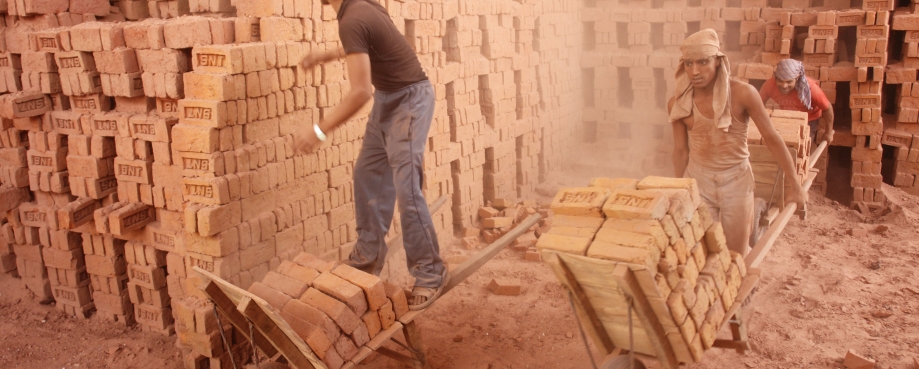
For Anti-Slavery Day, 18 October, Stirling Smith asks how important are definitions?
ETI's new Base Code Guidance: Modern slavery - practical guidance for brands and retailers.
ETI's training courses in ethical trade.
We've been running courses at ETI on Modern Slavery for some months now, and two questions keep popping up regularly. I'm going to have a go at answering them now.
First up:
What exactly IS modern slavery?
...because the Modern Slavery Act, 2015 does not define the term.
If you are interested, there is a lively and sometimes technical debate amongst lawyers and academics about this. And your fearless blogger is going to dive right in.
League of Nations
In 1926, the League of Nations came up with the Slavery Convention. The definition that was used was "the status or condition of a person over who all or any of the powers attaching to the right of ownership are exercised".
Just like any other treaty, (think the recent Climate Change treaty) it needs to be ratified. Less than a hundred countries have ratified the Convention, which seems rather a low number; the United Kingdom only ratified it in 1953.
But this definition has been universally accepted and every country in the world has now abolished that type of slavery, sometimes called "chattel slavery".
So some commentators have argued that as nobody can be legally owned, the League of Nations definition does not work anymore.
In which case, they say, we need a new definition that is precise, otherwise "slavery" becomes an emotional term thrown around by campaigners, the so-called new abolitionists.
Slavery is a relationship
In a landmark ruling of 2008, (The Queen v. Wei Tang), the Australian High Court ruled that the absence of legal ownership does not undermine the League of Nations definition.
Slavery is a relationship, not a thing. So, if a person acts as a slave owner, exercising control over another person, and preventing them from leaving that relationship – by violence or the threat of violence, for example – then that is probably a case of slavery.
How I try to explain it on our training is with two buckets.
One has a lid on, the other doesn’t.
If you are in the lidless bucket, you might well be badly exploited, but you can jump out of the bucket. But if the bucket has a lid on it, you are trapped. A slave.
It works on the training. But don't take my word for it, come along and check it out for yourself.
Slavery in Ancient Rome, in medieval Europe and in the American cotton fields before the Civil War, were very different from each other.
Today, slavery in India's brick kilns, in UK farms, and on Thai fishing vessels are all very different. But they are all contemporary forms of slavery.
That's a bit of a mouthful so we have modern slavery as a catch-all term.
How far down the supply chain must you go?
Time for the second most frequently asked question at ETI training:
How far down the supply chain must we go?
Let's take those brick kiln workers in India (or Pakistan).
You could go to your supplier's factory, knock down a bit of the wall, and inspect the bricks. They will have a set of initials that will identify the manufacturer. You could then track back to that particular brick kiln operator, where you would have an 80% chance of finding workers in debt bondage, the most common form of contemporary slavery.
Well you might feel better or worse about that, but to be honest, so what?
We already know that debt bondage is endemic in brick kilns in South Asia. We don't need to spend time or money researching that.
And the biggest companies on the UK high street, or the top FTSE 100 can do virtually nothing about it - in their supply chains. They can join in lobbying the Indian government to actually do something about it. Or support some of the groups who actually go the brick kiln areas and try to fight the problem.
But they cannot use their supply chain leverage to do anything about the plight of those brick kiln workers. It's the wrong tool.
Being more diligent
Of course you need to be more diligent in looking down your supply chain. This might mean more audits – the global social audit business will tell you that – but basically it means being more inquisitive.
It means looking into background reports on your key sourcing markets to see what's happening. It also means asking more questions. ETI's guidance on due diligence is a good place to start.
You know, or you should know, your supply chain better than anybody else, so keep an open mind, and if you have any doubts, dig deeper. And don't beat yourself up about situations where you have no leverage at all.
There are more questions on our courses, and more answers.
So come along and join other companies in unpacking one of the big challenges facing business today - and no less a person that the Prime Minister has made it one her government's top priorities.
Join our next Modern Slavery training day
